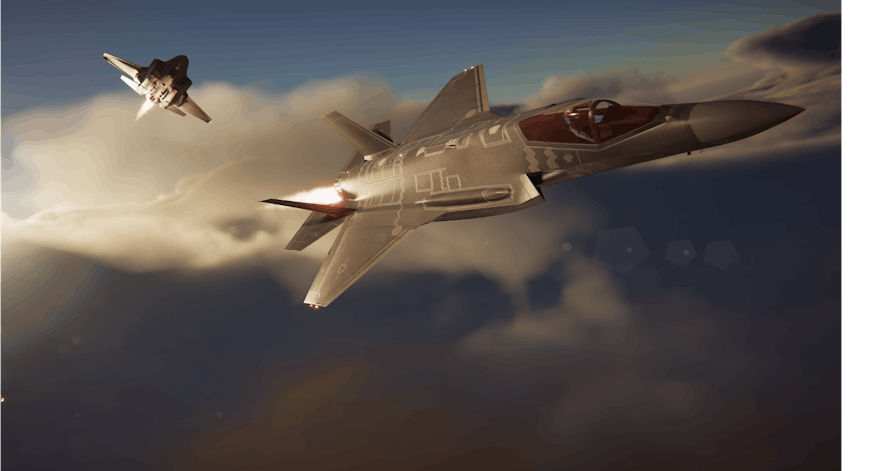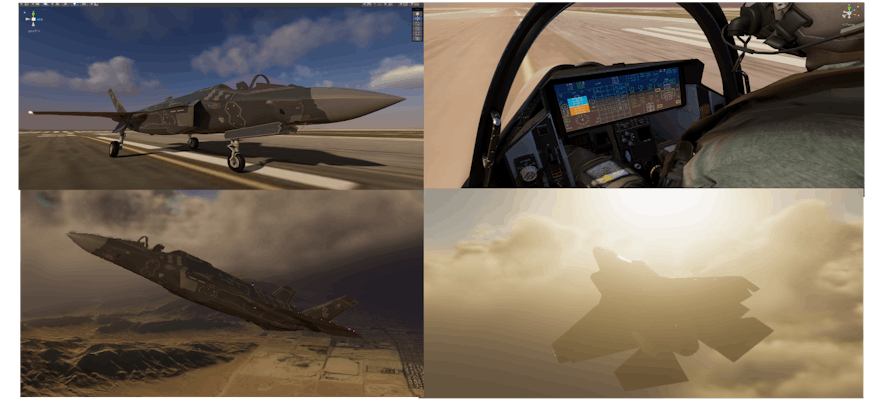Unity Builds Aviation Simulation with Cesium
Cesium announced Cesium for Unity in November 2022, unveiling it at I/ITSEC. The open source plugin combines the 3D geospatial streaming capability of Cesium and 3D Tiles with the Unity ecosystem. With a highly accurate WGS84 globe, a runtime 3D Tiles engine, and access to curated 3D geospatial content, Unity’s government and aerospace division has been using Cesium for Unity to create rich, immersive aviation simulations.
Unity's F-35 demo using Cesium for Unity, set in San Francisco, California, US. Courtesy Unity.
Paul Cummings, chief architect, and Gary Haus, from Unity’s government and aerospace division, created a flight simulator proof of concept using multiple available packages and the Cesium framework. Set in San Francisco, the demo shows accurate terrain and buildings for training anchored to real-world surroundings but performed virtually anywhere.
Cummings applied visual effects including physical atmospheric modeling, volumetric clouds, fog, global illumination, ray-tracing, and deep learning super sampling (DLSS), which uses artificial intelligence to increase graphics performance and quality.

F-35 fighter jets in Unity’s aviation simulation. Courtesy Unity.
“Integrating Cesium was surprisingly simple. Out of the box, you can get something in your project in less than 30 minutes. As we continue to evolve the solution, we will incorporate a high-precision flight model, Unity machine learning adversaries, enhanced ground data, and virtual reality,” said Cummings.
The demo was created by the Unity design team, combining Cesium geospatial data in the Unity High Definition Render Pipeline (HDRP) and an aerodynamic flight model for the F-35 Lightning II. Creation took just a few days and shows ease of integration with the Cesium platform.

In his Cesium for Unity F-35 demo, Cummings applied physical atmospheric modeling, volumetric clouds, fog, global illumination, ray-tracing, and DLSS. Courtesy Unity.
Cummings also shared streaming server demos using Cesium for Unity in London and Heathrow, UK, and Melbourne, Australia.
Unity’s Cummings and Haus, Cesium’s Brady Moore, and Esri’s Rex Hansen will lead a Unity developer workshop at the Central Florida Immersive Technology Summit at Full Sail University on March 31. The free workshop requires registration.
Cesium for Unity is free and open source for all users, with optional content and tools available commercially through Cesium ion.
What are you creating with Cesium for Unity? Try the tutorials and let us know what you’ve built.